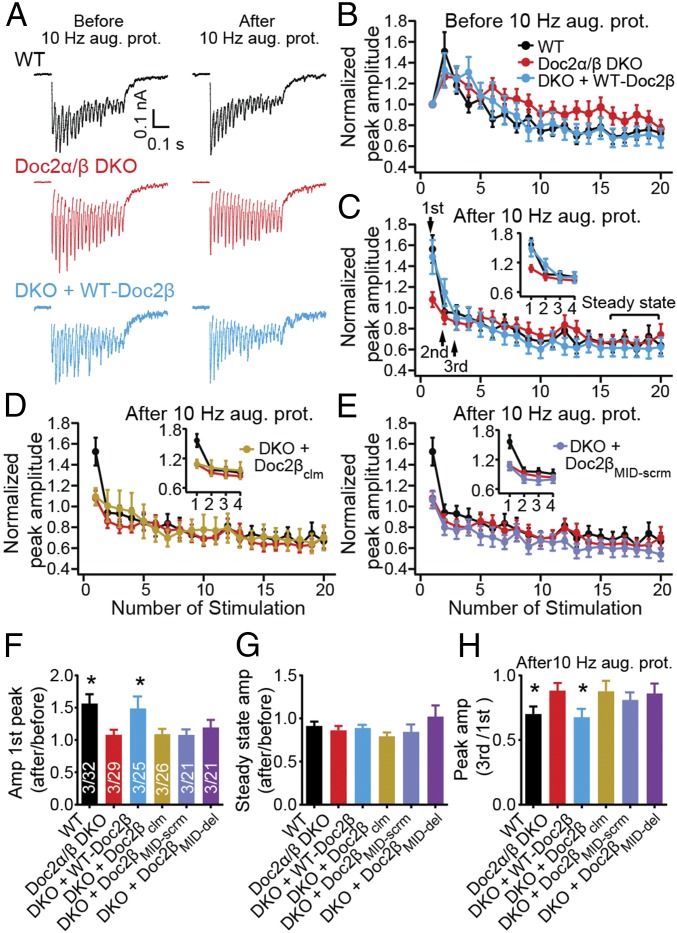Fig. 7.
Doc2 mediates synaptic augmentation by enhancing SV superpriming. (A) A 40-Hz stimulus train (0.5 s) was delivered 20 s before (Left) and 5 s after (Right) the augmentation protocol. (B–E) The peak amplitude of each EPSC during the two 40-Hz trains before (B) and after (C–E) applying the augmentation protocol was normalized to the first EPSC before augmentation. Data are plotted as mean ± SEM versus the stimulus number. In the first three EPSCs after the augmentation protocol (Inset), depression was steeper in WT versus Doc2α/β DKO neurons while steady-state amplitudes remained the same. These results indicate fewer superprimed SVs in the DKO. Expression of WT-Doc2β (C), but not Doc2βclm (D) or Doc2βMID-scrm (E), rescued the superpriming phenotype. (F and G) Normalized peak amplitude of each first response (F) and steady-state responses (G) before and after the augmentation protocol are presented as mean ± SEM. (H) After the augmentation protocol, the extent of SV superpriming was estimated by dividing the amplitude of the third peak by the first peak. Data are shown as mean ± SEM. *P < 0.05 versus Doc2α/β DKO, Kruskal–Wallis test followed by Dunn’s post hoc test.

